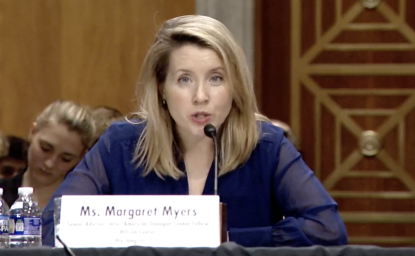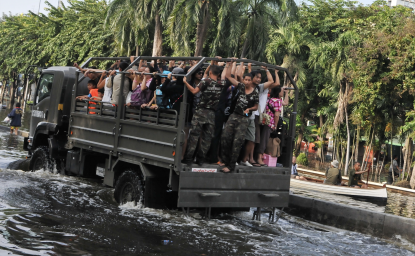This week's talks between Afghan President Hamid Karzai and U.S. President Barack Obama contain an ambitious agenda: negotiations on a new bilateral security agreement, U.S. troop levels after 2014, and peace talks to end America's longest war, among a host of other issues that imperil the future relationship between Washington and Kabul.
However, there's much more that requires discussion, including some delicate matters that both sides may be reluctant to tackle. Here are the five most important questions the two leaders should consider during Karzai's time in Washington.
1. Why are "green-on-blue" attacks -- Afghan soldiers targeting their American counterparts -- still occurring with such alarming frequency, despite robust efforts to stop them?
According to U.S. Defense Department figures, more than 50 coalition troops died from at least 37 such attacks last year. It's a problem that has grown in intensity, but not one that's entirely new: On Jan. 3, Foreign Policy released Pentagon PowerPoint slides describing years of efforts to screen and monitor Afghan recruits to prevent these sorts of attacks.
One possible explanation is that prevention strategies ignore a chief cause of these insider attacks -- cultural misunderstandings that escalate into disagreements and violence. NATO says that most insider attacks occur for this reason, while insurgent infiltration -- the main focus of the Pentagon slides -- accounts for only about a third of the cases.
Karzai and Obama should discuss more-effective ways to reduce these cultural clashes. The Afghan government distributes a guidebook to new recruits about the "culture of coalition forces." However, given the high level of illiteracy within the Afghan army (see below), the manual's effectiveness will likely be limited. And though U.S. troops receive instructions for how to interact with their Afghan partners, those forces working in closest proximity with Afghans should require extra training and, at the least, better advance screening for cultural sensitivity.
2. Are the Afghan armed forces' greatest needs being neglected?
Afghanistan's military remains a fledgling institution. Fighting capacities have improved considerably, yet are still in need of enhancement. To this end, Kabul hopes that Karzai's Washington visit results in fresh American commitments to equip the Afghan National Army -- particularly with better air support capacities.
Still, the most pressing need is arguably not more weaponry, but more literacy and less drug abuse. A staggering 95 percent of national army and police recruits are functionally illiterate. (Tellingly, according to one Reuters report, many in the army -- regarded as the most professional branch of the Afghan military -- can't read directions for maintaining vehicles or even fill out basic forms.) More than 100,000 Afghan soldiers and police participate in a basic literacy program, while several countries are funding a $200 million basic literacy program for Afghanistan as a whole -- but only until 2014. Such efforts must continue beyond 2014.
Drug abuse is similarly acute, with estimates ranging from 40 to 70 percent within the army and police. Witnesses report seeing Afghan troops high on marijuana, opium, and heroin -- including while on patrol (it's also worth acknowledging the drug abuse among U.S. soldiers in Afghanistan). Few measures have been instituted to deal with this substance abuse scourge. One worthwhile initiative would be a three-strikes-and-you're-out testing policy, with tests spread out over several months (a one-strike policy could decimate the armed forces' ranks). Such testing regimes would need to be accompanied by intensive drug treatment programs for Afghan troops. Soldier drug problems must be understood in the broader context of Afghanistan's widespread (and profitable) opium industry. The prospect of turning security over to a fighting force ravaged by substance abuse is deeply troubling -- and the narcotics economy feeding this addiction won't be going away anytime soon.
3. What can be done about conflicting Indian and Pakistani policies in Afghanistan?
India plays a critical role in Afghanistan. It has committed $2 billion in development assistance since 2001 (only four countries have provided more), and a 2011 strategic agreement obliges it to train Afghan security forces. India's ties to both the Afghan government and opposition are strong, and Kabul has declared that it wants India's presence to deepen.
Enter Pakistan -- a country with a long legacy of involvement in (and influence over) Afghanistan, and one that is assuming an increasingly prominent role in endgame negotiations. Islamabad's relations with New Delhi have improved somewhat in recent years, yet much of Pakistan's security establishment continues to believe that India's presence in Afghanistan represents a major threat. This is why Pakistan would favor a post-2014 arrangement that gives some political power to the virulently anti-India Afghan Taliban (which many believe has links to Pakistani intelligence). Such a scenario is increasing likely, given the current trajectory of negotiations.
New Delhi understandably fears the security implications of a politically ascendant Afghan Taliban in its neighborhood. The strategic calculus is complex here, but two simple American diplomatic moves could alleviate both Indian and Pakistani anxiety. First, the Obama administration should be upfront and transparent with the Indians about developments in the negotiation process. Second, Washington should leverage the modest warming trend in U.S.-Pakistan ties to reach out to Islamabad -- fortuitously, John Kerry, the presumed next secretary of state, enjoys excellent relations with the Pakistani security leadership -- to provide assurances that India has no nefarious objectives in Afghanistan. Succeeding with such steps is admittedly much easier said than done, but given the lack of immediate alternatives, they are well worth taking.
4. How can Afghanistan and the international community better harness the vast potential of the country's natural resources?
Kabul estimates that Afghanistan boasts minerals worth up to $3 trillion. If successfully exploited, these assets could be an elixir for Afghanistan's weak economy. Such prosperity would also go a long way toward helping consummate the "New Silk Road" initiative championed by the U.S. State Department -- which calls for a more economically strong and integrated South and Central Asia. It's a vision supported by most regional capitals.
For years, the chief obstacle has been access -- insufficient security for engineers and scientists to explore and excavate Afghanistan's unexploited wealth (though this hasn't stopped China and India from inking separate extractive deals with Kabul). However, last year the U.S. Geological Survey mapped the locations of Afghanistan's minerals by air -- removing many of the headaches of exploration.
The main challenge now is not how to find the reserves, but how to extract and transport them. Security remains a problem in this regard -- though it hasn't stopped China's extractive activities. Beyond the stability issue, Kabul, Washington, and other key capitals (and mineral investors) must develop mechanisms that ensure efficient, transparent, and equitable policies -- so that mineral wealth extends not just to foreign investors and the Afghan government, but also to common Afghans. Given Afghanistan's notorious corruption, it's an admittedly tall order. Yet the potential dividends are immense.
5. How can the international community ensure the longevity of development projects in Afghanistan?
The international community has lavished reconstruction funds on Afghanistan, resulting in scores of new roads, dams, and schools. Some of the most consequential projects happen to be the most expensive -- including a not-yet-completed $500 million dam renovation.
NATO and aid agencies hail these projects as success stories that can propel Afghanistan toward a more stable, prosperous future. In fact, they'll only remain successful if they're sufficiently maintained -- and funded.
Plans should be formulated to ensure these sparkling projects aren't eventually destroyed by militants, mismanaged by poorly trained workers, or neglected due to lack of funding. Development workers must focus as much on safeguarding existing projects as on generating new ones.
So, this week, when Obama and Karzai talk about transferring security to the Afghans, they should also talk about the equally daunting task of transferring development. Relevant Afghan ministries -- rural rehabilitation and development, agriculture, water and energy -- will need to step up, even as a considerable force of international aid groups and donors remains in place to provide resources and training. The key is to strike the right balance between Afghan responsibilities and international support.
When Obama and Karzai meet this week, it'll be impossible for them to discuss every issue under the sun -- such is the complexity of the troubled yet critical U.S.-Afghanistan relationship. Yet for the sake of Afghanistan's future -- and the U.S. role in it -- it's essential that they address these five questions.
This article first appeared in Foreign Policy.





